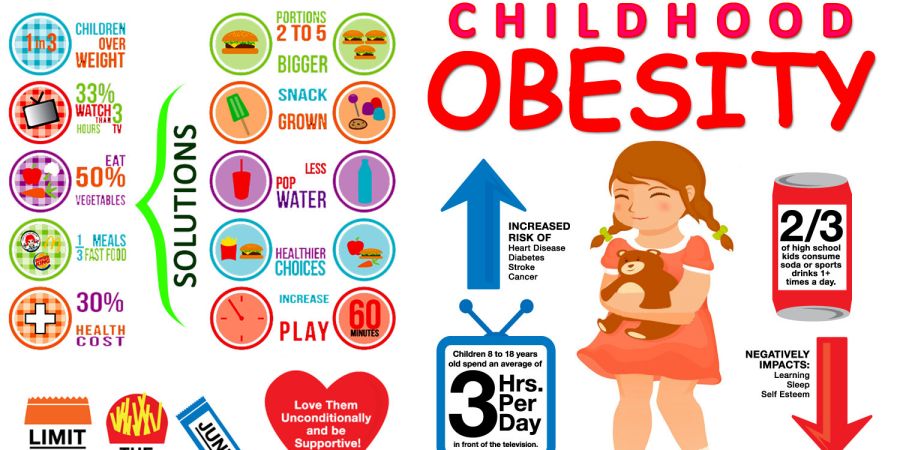

Obesity among children is on the rise:-
In recent years, the percentage of overweight kids has substantially climbed. In comparison to 20 years ago, 10% of 4 and 5-year-old youngsters are now overweight. The prevalence of obesity is higher in females than in boys and in older preschoolers (ages 4-5) than in younger ones (ages 2-3).
As kids age, obesity rates rise even more. At least one in five kids between the ages of 6 and 11 is overweight. This number has climbed by more than 50% over the past 20 years, and the proportion of obese children has almost doubled.
The majority of youngsters who are overweight do so as a result of bad eating habits (too many calories) and insufficient exercise. Since these practices are formed at a young age.
Assisting overweight kids:-
Given that most young children's bodies are still growing and developing, losing weight is generally not a wise strategy. Children who are overweight shouldn't start diets unless a doctor prescribes them for health reasons. A rigorous diet might not provide the minerals and energy necessary for healthy growth and development.
By providing wholesome meals and snacks, encouraging daily exercise, and offering nutrition education, parents and other caregivers can avoid childhood obesity. Good meals and snacks nourish growing bodies while serving as role models for healthy eating attitudes and behaviors. Increased physical exercise helps with weight management and lowers health risks. Children who get nutrition instruction grow up with a lifetime awareness of proper food and nutrition.
Parents can influence kids to embrace wholesome eating habits and active lifestyles by:
Aim for good health rather than a specific weight. Without focusing on body weight, teach and model healthy and positive attitudes toward food and exercise.
Put the family first. Do not separate youngsters who are overweight. Work to gradually alter the family's eating and exercise habits by involving everyone.
Establish regular times for meals and snacks, and try to eat meals together as often as you can. Make a selection of nutritious foods that follow the Food Guide Pyramid for Young Children readily available. Determine what food will be provided and when, and then leave it up to the child to decide whether or not to consume it.
Encourage your body to move. Regularly engage in family physical activity time, including hikes, bike trips, walks, and active games. Encourage your kids to participate in supervised physical activity. Create a play area outside that is accessible and safe.
Don't let kids spend more than an hour or two a day on the computer, playing video games, or watching TV. The typical American child watches television for roughly 24 hours each week. Physical activity can be increased by cutting down on sedentary activities.
Thank you guys.
Please support me.


